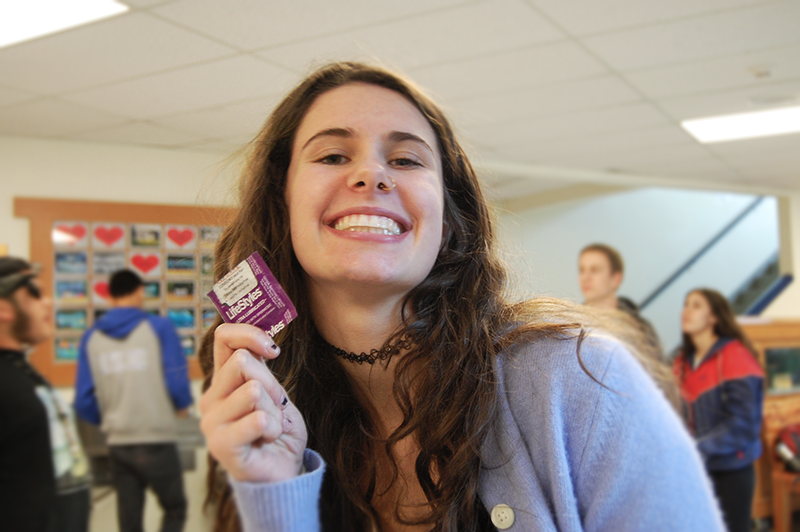Let’s face the facts: teenagers have sex, and most of the high school is teenage. In fact, according to Youth Advacates, “46 percent of all high school age students and 62 percent of high school seniors have had sexual intercourse.” Almost 50 percent of our high school students across the nation are having sex whether they have protection or not, whether the school teaches abstinence or birth control or not, whether parents consent or know what they’re doing or not. Kids are going to be sexually active. Regardless of one’s opinion of the morality or social acceptability of the issue, this much is unavoidable. Logically, then, contraceptives should be made absolutely as available as possible to the teen community, yet an undeniable stigma persists surrounding the acquisition of birth control.
In this regard, our town is fairly exemplary. A number of student and community groups have made condoms freely available in a variety of locations throughout Eastsound for the express purpose of supplying youth. However, the majority of these locations are not necessarily the types of places the average student might frequent. Take, for example, the senior center — not exactly a spot one might expect to find a high school student. Some locations even require that one explicitly asks for condoms in order to receive one, a system fairly counter-productive if the goal is to take awkward feelings away from the act of acquiring birth control. While these public placements are a step in the right direction, they still perpetuate the stigma surrounding contraceptives which exists in our society.
What our community’s youth needs is a way to access birth control in a convenient and not embarrassing location. Talking to one’s parent is a good way to learn about sex and discuss safety, but having birth control available for those teens that don’t feel comfortable talking to their parents or whose parents won’t provide them with a form of birth control is vital.
What we need is birth control in our schools. Where do kids spend most of their time? At school. That way students have ready access to free birth control — in this case, for convenience and financial reasons, condoms would probably be this form of birth control. With more convenient and accessible forms of birth control, students that might not have used birth control now will. And with these condoms, we can help prevent the spread of STDs and unplanned pregnancy.
I believe condoms and birth control within the school would spark an interest and discussion of better and more progressive sexual education. One of the most common arguments against providing condoms and more extensive birth control is that by doing so, the school is promoting sexual activity and promiscuity. That is completely incorrect, and has been proven wrong. Anneke Fleming states in an essay on the benefits of sexual education that “in a study by Baldo and Aggleton, the conclusion was that ‘sex education either caused a delay in the onset of sexual activity or a reduction in overall sexual activity. Sexually active youth, in 10 studies, also adopted safer sex practices after attending sex education.’” Abstinence education is relatively ineffective and assumes that teenagers will always wait until adulthood to have sex, despite empirical evidence stating that the average age of first sexual intercourse is 17.3 years of age for females and 17 years of age for males. Abstinence as sexual education is also rooted in ideals of ‘female purity’ and religious influences that I believe have no business in our education system.
For the good of our youth and our society as a whole, we must promote better sexual health education. The first step begins in our schools, through providing easy access to birth control. I urge you to talk to your local school board about providing this service and promoting the group Island Reproductive Health Initiative, or IRHI, which is currently attempting to lobby for these services and improvements in the way our school and our society deals with sexual education and activity.

